History of Roatan Honduras
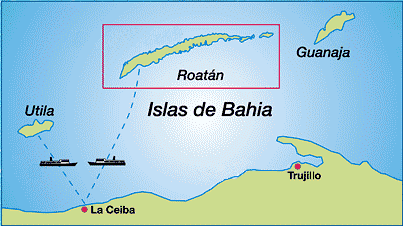 Roatan Geography -
The Island of Roatan is the largest of the 7
bay islands and is located 10 to 40 miles off of the coast of
Honduras in the Caribbean sea. Roatan is approximately 40 miles long and 2.5
miles wide. The island of Roatan total land size is 49.5 square
miles. The highest point on Roatan is 900 feet above sea
level.
Roatan Geography -
The Island of Roatan is the largest of the 7
bay islands and is located 10 to 40 miles off of the coast of
Honduras in the Caribbean sea. Roatan is approximately 40 miles long and 2.5
miles wide. The island of Roatan total land size is 49.5 square
miles. The highest point on Roatan is 900 feet above sea
level.
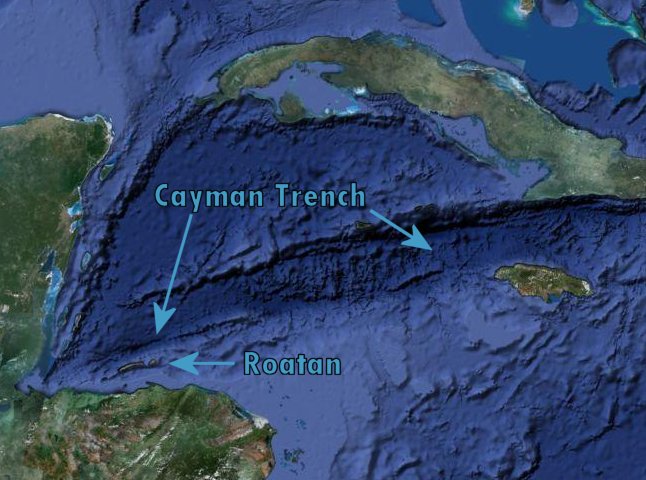 Roatan Geology -
Somewhere around 50 million years ago, two tectonic plates
collided forming the Motagua and Swan island faults.
Somewhere around 25 million years ago the remnants of this
collision emerged from the ocean as the bay islands. The bay
islands are primarily made of basalt and limestone from
ancient reefs. The Cayman Trench is located just to the
north of Roatan and is approximately 25,000 feet deep.
Roatan Geology -
Somewhere around 50 million years ago, two tectonic plates
collided forming the Motagua and Swan island faults.
Somewhere around 25 million years ago the remnants of this
collision emerged from the ocean as the bay islands. The bay
islands are primarily made of basalt and limestone from
ancient reefs. The Cayman Trench is located just to the
north of Roatan and is approximately 25,000 feet deep.
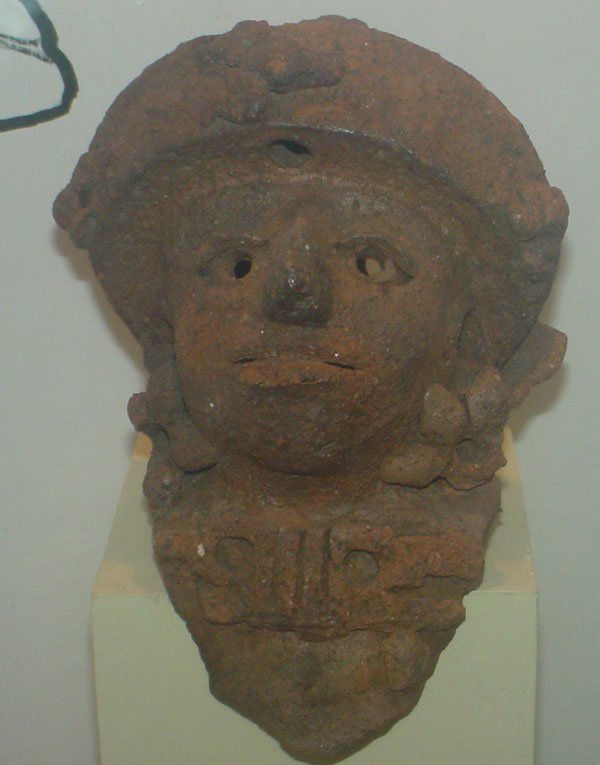 Roatan's
First Inhabitants - The
first recorded inhabitants of Roatan were the Paya Indians.
Paya artifacts are discovered on Roatan almost every day.
Paya pottery and idols are called "Yaba Ding Dings". Based
on the volume of Paya Indian artifacts, the Paya were a
thriving civilization on the island of Roatan, with a population of about
1,000 Paya Indians. Christopher Columbus explored the Bay
islands and Roatan on his fourth and final trip to the new world in 1505 and
wrote of the Paya Indian inhabitants on Roatan. Christopher
Columbus and crew were the first Europeans to visit the
island of Roatan. The Paya Indians of Roatan were peaceful
farmers and expert fishermen. Columbus also noted the Paya
Indians were a matriarchal society on Roatan.
Roatan's
First Inhabitants - The
first recorded inhabitants of Roatan were the Paya Indians.
Paya artifacts are discovered on Roatan almost every day.
Paya pottery and idols are called "Yaba Ding Dings". Based
on the volume of Paya Indian artifacts, the Paya were a
thriving civilization on the island of Roatan, with a population of about
1,000 Paya Indians. Christopher Columbus explored the Bay
islands and Roatan on his fourth and final trip to the new world in 1505 and
wrote of the Paya Indian inhabitants on Roatan. Christopher
Columbus and crew were the first Europeans to visit the
island of Roatan. The Paya Indians of Roatan were peaceful
farmers and expert fishermen. Columbus also noted the Paya
Indians were a matriarchal society on Roatan.
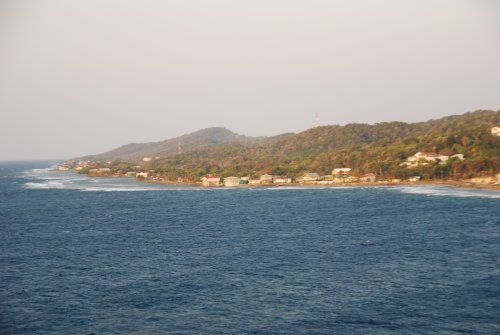 In 1516 Diego Velasquez
de Cuellar of Spain sent two
ships to Roatan to enslave the Paya Indians. 300 Paya
Indians of Roatan were captured and put on a slave ship headed to
Havana Cuba. The Paya Indians escaped and took over the ship as it
neared Havana. They were able to sail back to Roatan and
their families. The Spanish returned to Roatan with
reinforcements and massacred over 500 Paya Indians. The
remaining Paya were enslaved on Roatan and forced to farm for
the Spanish.
In 1516 Diego Velasquez
de Cuellar of Spain sent two
ships to Roatan to enslave the Paya Indians. 300 Paya
Indians of Roatan were captured and put on a slave ship headed to
Havana Cuba. The Paya Indians escaped and took over the ship as it
neared Havana. They were able to sail back to Roatan and
their families. The Spanish returned to Roatan with
reinforcements and massacred over 500 Paya Indians. The
remaining Paya were enslaved on Roatan and forced to farm for
the Spanish.
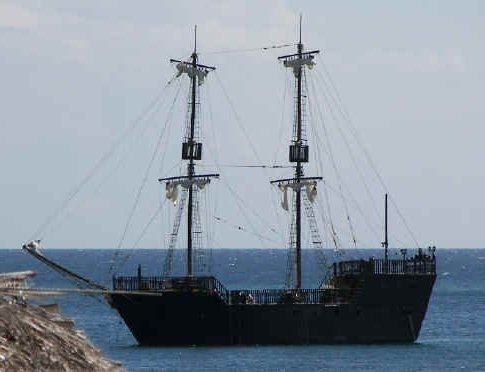 Roatan Pirates - The
Spanish were using Roatan to resupply gold filled Spanish
Galleons headed back to Spain around 1580. Once the Roatan Pirates
realized how much gold was passing through Roatan, they set up
several pirate colonies on Roatan near the modern city of
Port Royal. Spanish records show 547
Spanish treasure ships were captured an looted by Roatan
Pirates between 1580 to 1636. Pirate colonies on Roatan were
well established and thriving.
Roatan Pirates - The
Spanish were using Roatan to resupply gold filled Spanish
Galleons headed back to Spain around 1580. Once the Roatan Pirates
realized how much gold was passing through Roatan, they set up
several pirate colonies on Roatan near the modern city of
Port Royal. Spanish records show 547
Spanish treasure ships were captured an looted by Roatan
Pirates between 1580 to 1636. Pirate colonies on Roatan were
well established and thriving.
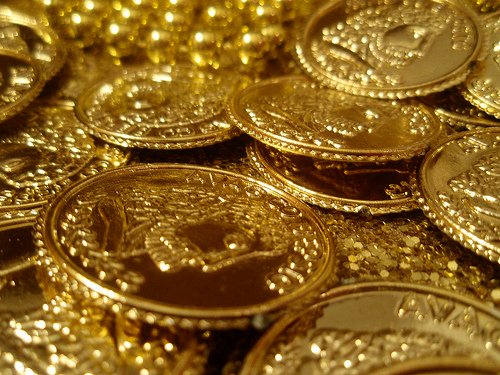 The
Paya Indians of Roatan were very supportive and helpful to the Roatan
Pirates due to their longstanding hate of the Spanish. The Paya fishermen
of Roatan
would light a lantern on their boats whenever they sighted a
Spanish Galleon to signal the Roatan pirates that a Spanish treasure
ship was near. The Spanish Galleons were slow moving due to
their holds being filled with stolen Inca gold and treasure. This made
the Spanish easy
targets for the Roatan Pirates.
The
Paya Indians of Roatan were very supportive and helpful to the Roatan
Pirates due to their longstanding hate of the Spanish. The Paya fishermen
of Roatan
would light a lantern on their boats whenever they sighted a
Spanish Galleon to signal the Roatan pirates that a Spanish treasure
ship was near. The Spanish Galleons were slow moving due to
their holds being filled with stolen Inca gold and treasure. This made
the Spanish easy
targets for the Roatan Pirates.
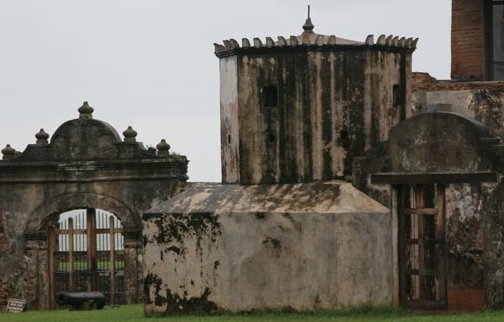 Around 1640
the English Pirate William Jackson
established his own Pirate fleet on Roatan, with 16 ships and 1500 men
he sailed to Trujillo, Honduras. He sacked the city of
Trujillo and looted the Spanish fort above the city. William
Jackson freed the Paya Indian
slaves of Roatan in Trujillo and returned them to Roatan, looting
large amounts of stolen Inca gold and killing many Spanish in the process.
Around 1640
the English Pirate William Jackson
established his own Pirate fleet on Roatan, with 16 ships and 1500 men
he sailed to Trujillo, Honduras. He sacked the city of
Trujillo and looted the Spanish fort above the city. William
Jackson freed the Paya Indian
slaves of Roatan in Trujillo and returned them to Roatan, looting
large amounts of stolen Inca gold and killing many Spanish in the process.
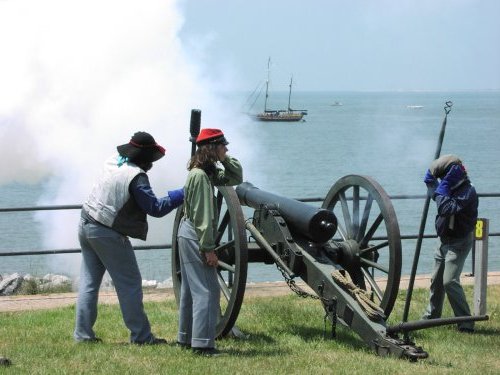 The Spanish retaliated against
William Jackson and the Roatan
Pirates and attacked Roatan in the late 1640's with over
30 Spanish ships. The Spanish
destroyed every home on Roatan, and burned all of the crops.
The Spanish even destroyed most of Roatan's old growth
mahogany trees. The remaining Paya Indians of Roatan that
survived this attack were enslaved again by the Spanish and shipped
throughout the Caribbean. By 1650 Roatan was completely
deserted.
The Spanish retaliated against
William Jackson and the Roatan
Pirates and attacked Roatan in the late 1640's with over
30 Spanish ships. The Spanish
destroyed every home on Roatan, and burned all of the crops.
The Spanish even destroyed most of Roatan's old growth
mahogany trees. The remaining Paya Indians of Roatan that
survived this attack were enslaved again by the Spanish and shipped
throughout the Caribbean. By 1650 Roatan was completely
deserted.
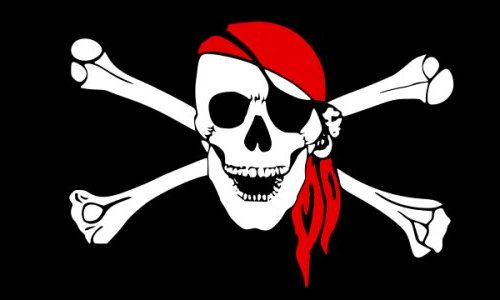 In the 1660's Pirate Captain Henry Morgan
set up his base of operations on Roatan. The looting was so
good that the Pirate ships would have to stop looting for
fear that their own ships would sink as they were so
overloaded with Spanish gold. Captain Morgan would sail back
to Roatan, bury their Pirate plunder and go back after more
Spanish Galleons. There were almost 5,000 pirates operating
out of Roatan by 1670.
In the 1660's Pirate Captain Henry Morgan
set up his base of operations on Roatan. The looting was so
good that the Pirate ships would have to stop looting for
fear that their own ships would sink as they were so
overloaded with Spanish gold. Captain Morgan would sail back
to Roatan, bury their Pirate plunder and go back after more
Spanish Galleons. There were almost 5,000 pirates operating
out of Roatan by 1670.
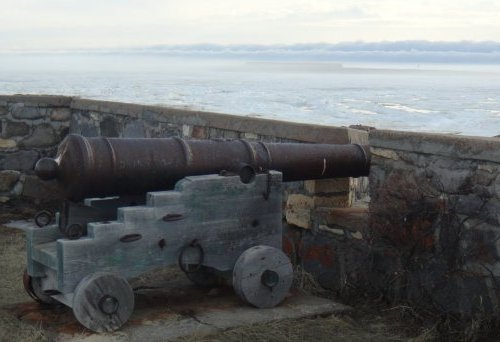 England's claim for Roatan
- In 1742 England was at war with Spain and England
realized the strategic value of Roatan. England built two
forts in Port Royale, Roatan to protect the natural harbor.
Fort Frederick was protected by 6 cannons and Fort George
was equipped with 17 cannons. Four years after the forts
were built and fortified, they were abandoned completely due to
England making peace with Spain.
England's claim for Roatan
- In 1742 England was at war with Spain and England
realized the strategic value of Roatan. England built two
forts in Port Royale, Roatan to protect the natural harbor.
Fort Frederick was protected by 6 cannons and Fort George
was equipped with 17 cannons. Four years after the forts
were built and fortified, they were abandoned completely due to
England making peace with Spain.
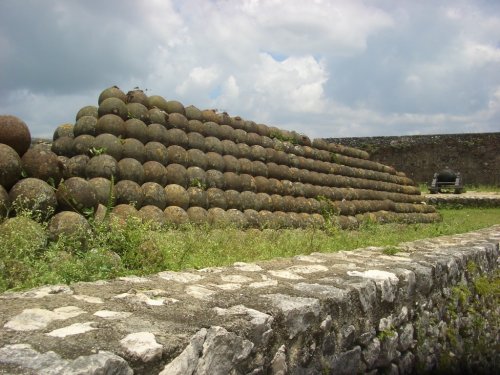 The
peace between England and Spain was short lived. In 1780 the war was back on and the
English quickly re-fortified Fort George and Fort Frederick
on Roatan. The Spanish attacked the English forts on Roatan
in 1782 with a fleet of ships including 2 Spanish
Man-o-Wars. The English had lost both forts on Roatan within
2 days. The Spanish destroyed the forts, farms and all the
houses on Roatan. Then looted what they
could carry, and left Roatan deserted once again.
The
peace between England and Spain was short lived. In 1780 the war was back on and the
English quickly re-fortified Fort George and Fort Frederick
on Roatan. The Spanish attacked the English forts on Roatan
in 1782 with a fleet of ships including 2 Spanish
Man-o-Wars. The English had lost both forts on Roatan within
2 days. The Spanish destroyed the forts, farms and all the
houses on Roatan. Then looted what they
could carry, and left Roatan deserted once again.
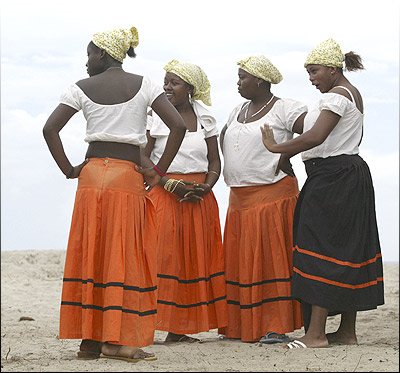 The Garifuna on Roatan -
In 1797 there was a slave rebellion on the island of St.
Vincent. The English rounded up over 5,000 rebellious black
slaves from St. Vincent and abandoned them on the shore of
Roatan with no supplies, just the clothes on their backs.
The Spanish "rescued" many of the abandoned slaves and
transported them to to mainland Honduras, fearing another
English settlement on Roatan. The slaves that remained on
Roatan are the Garifuna people. They established the city of
Punta Gorda and survived by fishing and planting crops. The
Garifuna have kept their own culture, language and
traditions separate from the rest of Roatan's Paya Indians.
The Garifuna on Roatan -
In 1797 there was a slave rebellion on the island of St.
Vincent. The English rounded up over 5,000 rebellious black
slaves from St. Vincent and abandoned them on the shore of
Roatan with no supplies, just the clothes on their backs.
The Spanish "rescued" many of the abandoned slaves and
transported them to to mainland Honduras, fearing another
English settlement on Roatan. The slaves that remained on
Roatan are the Garifuna people. They established the city of
Punta Gorda and survived by fishing and planting crops. The
Garifuna have kept their own culture, language and
traditions separate from the rest of Roatan's Paya Indians.
The island of Roatan was previously known as Isla De La Bahia.
Jimmy Buffett wrote his classic song, "Cheeseburger In Paradise" in Roatan while waiting for some repairs to be made on his schooner "Music".

